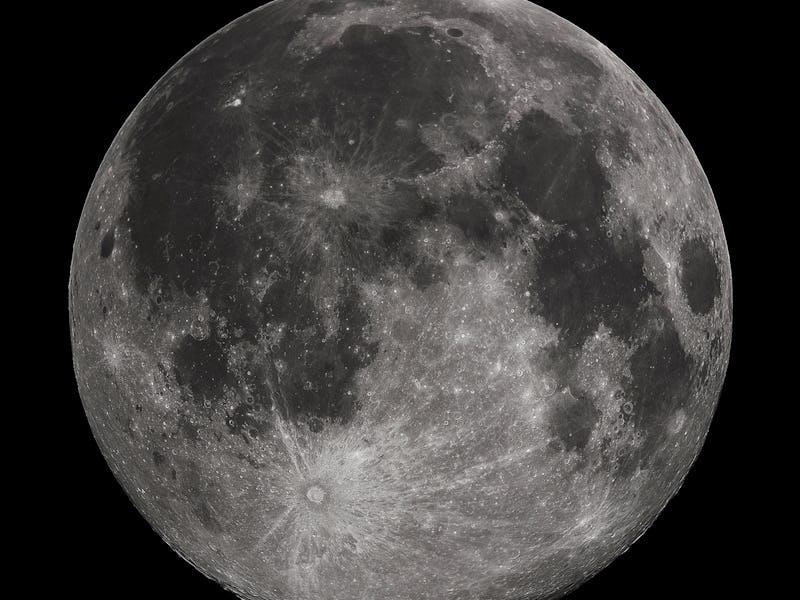China's Yutu Rover Has Uncovered Weird Earth Blends Spewed from Ancient Moon Volcanoes
If you're obsessed with how planets and moons form, keep reading.

After two years of quiet work, China’s little robotic Yutu rover, part of its Chang’e-3 lunar mission, has found a bedrock full of young earth recently (in geologic terms) formed by volcanic activity. It’s a finding unlike anything scientists have seen before on the moon.
Two major international partnerships dug through the rover’s data and spent months analyzing it. The results, detailed in the latest issue of Nature Communications, solve a mystery about the Moon’s current geological composition, and provide insights about the history of Earth’s only natural satellite.
Chang'e 3, China's first Moon lander, imaged by the Yutu rover.
After the Chang’e-3 mission rover hit the ground safely, it arguably brought lunar space research back for the 21st century. The rover was specifically tasked with landing on a northern part of the moon’s Imbrium basin — a visibly prominent region formed by lava that had filled up the massive crater.
See, most scientists think the Moon was created by a Mars-sized object smashing into the Earth and ejecting a ton of molten material out into space. This material cooled and formed the spherical thing we call the moon, but not before some parts of the interior began to erupt about 500 million years later, oozing lava into leftover impact craters and basins.
The Imbrium basin, where the rover landed, is perhaps the most prominent of these basins, and this is the first time scientists have been able to study its younger lava flows, estimated to be less than three billion years old.
Orbital images of the Imbrium basin.
What did the research team discover? Two major things: Titanium in the rock — an important metal for understanding volcanism on the moon — was oddly … intermediate (amounts of titanium are usually high or low). This finding points to a peculiar lava-cooling process that scientists are still perplexed by. Also, the rich amounts of a mineral called olivine found in the bedrock is due to its pairing to iron, which leads scientists to think the lunar crust-mantle is a diverse blend of elements.
In other words, we’ve basically identified a brand new type of moon rock.
“The diversity tells us that the Moon’s upper mantle is much less uniform in composition than Earth’s,” said Bradly Jolliff, a planetary sciences researcher at Washington University in St. Louis and one of the collaborating scientist behind analyzing Chang’e-3’s data. “And correlating chemistry with age, we can see how the Moon’s volcanism changed over time.”
There’s not much in the study’s findings that appeal to anyone who isn’t obsessed with planetary and moon formation. What most people can understand, however, is how these latest findings put China on a forefront of space research that is currently limited to the Unites States and the European Space Agency (and Russia, to a lesser extent). China isn’t just sending up rockets into orbit and probes out to different places as proof it’s capable of doing so — it’s contributing real discoveries related to the science of outer space.
In fact, the findings come hot on the heels of China’s recent pledge to land a rover on Mars in 2020, as well as send another rover to the moon — this time to the dark side.
China, it seems, is filling a vacuum of lunar research that has remained empty for several decades. The United States hasn’t landed an operable piece of equipment on the moon since the Apollo program ended in 1972. In fact, no one has attempted such a thing since the Soviet Union’s successful Luna-24 mission in 1976, in which an unmanned probe was able to successfully bring samples of the lunar rock back to Earth. Most study of the moon since then has been almost completely confined to orbital instruments, which obviously cannot directly sample and analyze physical lunar material.
As the country continues to harness its newfound wealth and power to take on more space projects, its only a matter time before we see it on an equal footing as Russia. Soon after its eclipses that country, it’s sights will be set straight on dethroning the United States